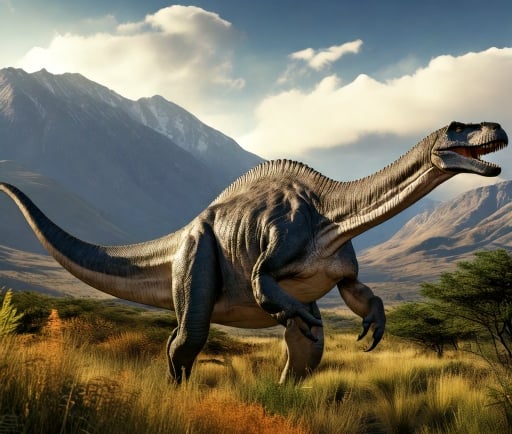Argentinosaurus: The Colossal Giant of the Late Cretaceous Period


Introduction to the Argentinosaurus
The Argentinosaurus is recognized as one of the largest known land animals to have ever roamed the Earth. This impressive genus of giant sauropod dinosaurs lived during the late Cretaceous period in what is now Argentina. Its massive size and immense weight make it a remarkable subject of study for paleontologists and enthusiasts alike. With a fascinating history and the challenges of reconstructing its existence, the Argentinosaurus provides key insights into the prehistoric world.
The Size and Structure of Argentinosaurus
The Argentinosaurus stood out not only for its length but also for its notable features. Estimated to reach lengths of over 100 feet and weighing as much as 100 tons, this dinosaur dwarfed many of its contemporaries. Paleontologists theorize that the Argentinosaurus had a long neck, which allowed it to reach high vegetation in trees, a trait that is common among sauropods. Its long tail served as a counterbalance to its massive body, enabling stability and movement in a relatively agile manner for its size.
Ecological Role and Habitats
The ecological role of the Argentinosaurus during the late Cretaceous period was significant. As a herbivore, it played a crucial role in the ancient ecosystems of what was then a lush and diverse environment in Argentina. The Argentinosaurus likely fed on a variety of plant life, ranging from low-lying shrubs to the higher foliage of trees, thus impacting the vegetation structure of its habitat. Understanding the way this giant interacted with its surroundings allows scientists to gain a deeper appreciation for the biological networks of prehistoric times.
Fossils of the Argentinosaurus have been uncovered in several locations throughout Argentina, underscoring its geographic distribution. The discoveries not only enhance our knowledge of this particular dinosaur but also shed light on the climatic and environmental conditions of the late Cretaceous, contributing to a greater understanding of those ancient times.
Conclusion: The Legacy of Argentinosaurus
The Argentinosaurus remains an icon of prehistoric giant sauropods and continues to captivate the imagination of many. With ongoing research and new fossil discoveries, our comprehension of this colossal dinosaur evolves. As scientists delve deeper into the lifestyle, ecology, and evolutionary significance of the Argentinosaurus, we solidify its legacy as a testament to the astonishing diversity of life that once thrived on our planet.
